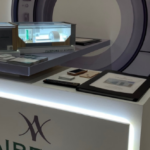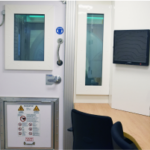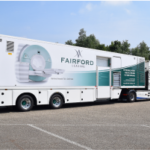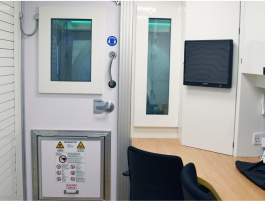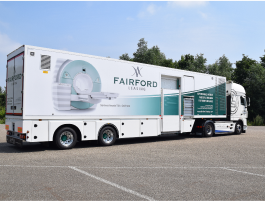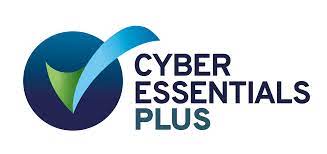In 1971, the first Computed Tomography image was produced of a patient’s brain in Atkinson Morley’s Hospital, London. Thanks to the research and development undertaken by one Sir Godfrey Hounsfield of EMI laboratories, the CT scanner was able to produce a cross-sectional image —or “slice” — of the patient’s brain to reveal more detailed information than a conventional x-ray could achieve.
While the technology would take time to mature, this ground-breaking achievement paved the way for a new era in patient care. Today, CT scans are a core service offered at hospitals across the world – yet, for the most part, the science behind Computed Tomography systems remains unknown to those outside the medical profession.
Consistently ranking in the top five medical developments of the last 50 years, CT systems play a key role in the diagnosis and treatment of serious illnesses and injuries – but it isn’t by magic that we have this technology. So, just how does a CT system work and what benefits can it offer in improving patient outcomes?
HOW A CT SYSTEM WORKS
The CT scan, also known as CAT (Computed Axial Tomography) scan, is a computerised x-ray imaging procedure that performs a non-invasive examination on a patient to inform diagnosis and treatment options. The procedure itself requires the patient to lie on a bed which will slowly move through the “gantry” or opening of the CT scanner. As the patient goes through the scanner, a narrow beam of x-rays will be aimed at their body and quickly rotate to produce and send signals back to the machine’s computer.
From here, the scanner is able to generate a multitude of cross-sectional 2D images known as ‘slices’ of the human body. These images can either be assessed individually or “stacked” to gain a 3D view of the human body including the skeleton, organs and tissues. This technique enables the efficient detection of abnormalities and allows radiographers the option to get both the full scope and the precise detail of where an abnormality is located in one procedure.
WHEN IS A CT USED?
CT scans are used to detect diseases or determine the impact of injuries within various regions of the human body. Due to the detail, they offer radiographers, CT scans have become an essential tool in the early identification and location of tumours, lesions and clots and in turn, the prevention of potentially fatal conditions.
Computed Tomography can further be useful in understanding complicated bone fractures or damage from erosion that a conventional x-ray may not be able to pick up. In the treatment of illnesses such as cancer, CT scans can be effective in monitoring progress through treatment, producing images of a tumour to determine the size difference before and after therapy. Naturally, the procedure is generally only available to patients with symptoms, as the benefits may not outweigh the risks for a screening.
WHAT ARE THE RISKS?
CT scans have come a long way since the 1970s: today, undergoing a scan is a quick and painless process that is generally considered safe. Of course, since the nature of the CT scan relies on the use of x-rays, the procedure does come with the small risk of exposure to radiation. Medical imaging technology today is designed to ensure the patient is exposed to as little radiation as possible during a CT scan, and no radiation is left in your body after the scan is finished – however, the risks and benefits will always be assessed prior to the procedure taking place.
WHAT ARE THE BENEFITS?
Each medical imaging technology has its own unique advantages: for radiographers, the rapid acquisition of images and clarity of information produced by a CT scan make this procedure extremely beneficial in guiding treatment of common conditions and determining when surgery is required.
For patients, undergoing a quick CT scan could prove life-saving, and recent studies have indicated the success of a low-dose CT lung cancer screening in decreasing mortality rates while being relatively cost-effective. What’s more, recent advances in CT technology have offered a wave of new opportunities for improved patient imaging: while it may have once taken hours to produce the results of a scan, data acquisition today takes mere milliseconds and rapid image reconstruction has seen the arrival of real-time imaging.


